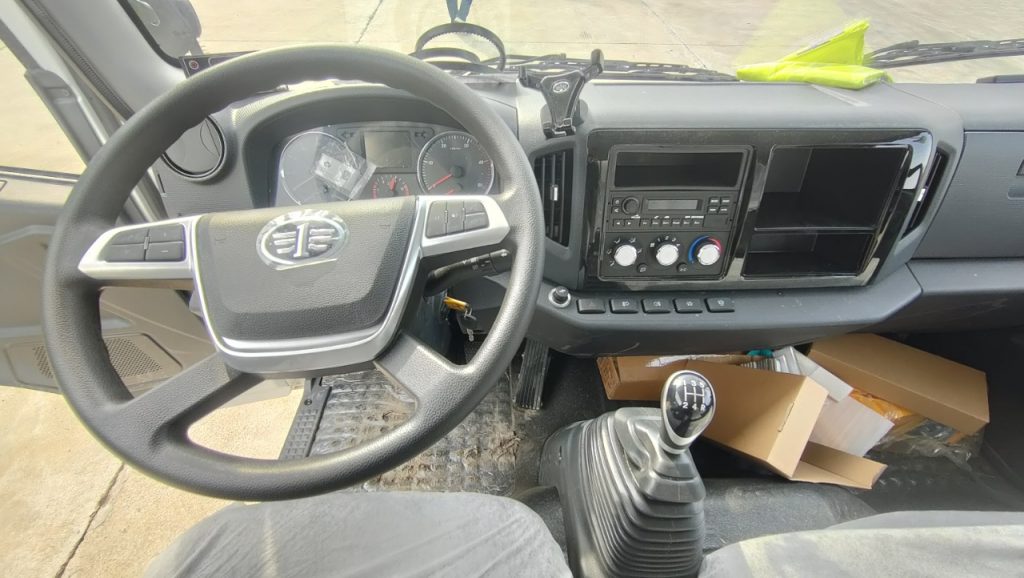Introduction
Crane trucks are essential vehicles for a variety of industries, including construction, transportation, and logistics. These versatile machines are used for lifting and moving heavy loads, making them crucial assets in many operations. To ensure the safe and efficient operation of a crane truck, it is essential to implement a comprehensive maintenance schedule. Regular maintenance not only prolongs the lifespan of the crane truck but also ensures the safety of operators and workers on-site. In this article, we will discuss the importance of crane truck maintenance, the key components of a maintenance schedule, and best practices for keeping your crane truck in optimal condition.
Importance of Crane Truck Maintenance
Maintaining a crane truck is crucial for several reasons. Firstly, regular maintenance helps identify and address potential issues before they escalate into costly repairs or breakdowns. By conducting routine inspections and servicing, operators can catch minor problems early on and prevent them from becoming major issues that could result in downtime and lost productivity.
Secondly, proper maintenance is essential for ensuring the safety of the crane truck and its operators. Crane trucks are powerful machines that handle heavy loads, and any mechanical failure or malfunction could have serious consequences. By following a structured maintenance schedule, operators can minimize the risk of accidents and ensure that the crane truck operates safely at all times.
Additionally, regular maintenance helps maintain the performance and efficiency of the crane truck. Well-maintained equipment operates more effectively, consumes less fuel, and experiences fewer breakdowns, leading to cost savings and improved productivity.
Components of a Crane Truck Maintenance Schedule
A comprehensive maintenance schedule for a crane truck should include the following key components:
1. Daily Inspections: Operators should perform a visual inspection of the crane truck before each use. This includes checking for any visible damage, leaks, loose bolts, or signs of wear and tear. Daily inspections help identify any immediate issues that require attention and ensure that the crane truck is safe to operate.
2. Regular Servicing: In addition to daily inspections, crane trucks should undergo regular servicing at specified intervals. This includes changing fluids, replacing filters, inspecting and lubricating moving parts, and performing any necessary adjustments or repairs. The frequency of servicing will depend on the manufacturer's recommendations, the usage of the crane truck, and environmental conditions.
3. Structural Inspections: Crane trucks should undergo periodic structural inspections to assess the integrity of the crane and its components. This includes checking for cracks, corrosion, or other signs of structural damage that could compromise the safety and performance of the crane truck. Structural inspections should be conducted by qualified technicians and in accordance with industry standards.
4. Electrical System Check: The electrical system of a crane truck is critical for its operation, including the functioning of lights, alarms, and other safety features. Regular checks of the electrical system should be included in the maintenance schedule to ensure that all components are working correctly and that there are no issues with wiring or connections.
5. Hydraulic System Maintenance: The hydraulic system is another essential component of a crane truck that requires regular maintenance. This includes checking hydraulic fluid levels, inspecting hoses and fittings for leaks or damage, and ensuring that the system is operating correctly. https://www.worktruckmaker.com/water-tank-truck/ of the hydraulic system is crucial for the safe and efficient operation of the crane truck.

6. Brake Inspection: The brakes of a crane truck are critical for safety, especially when lifting and moving heavy loads. Regular inspections of the brake system should be included in the maintenance schedule to check for wear, leaks, or other issues that could affect braking performance. Brake pads and other components should be replaced as needed to ensure optimal braking efficiency.
Best Practices for Crane Truck Maintenance
To maintain a crane truck effectively, operators and maintenance personnel should follow these best practices:
1. Create a Maintenance Schedule: Develop a detailed maintenance schedule for the crane truck that includes all necessary inspections, servicing, and repairs. The schedule should be based on the manufacturer's recommendations, industry standards, and the specific requirements of the crane truck.
2. Train Operators and Maintenance Personnel: Ensure that operators and maintenance personnel are properly trained in the maintenance procedures for the crane truck. Training should cover safety protocols, inspection techniques, and maintenance tasks to be performed regularly.
3. Use Genuine Parts and Fluids: When servicing the crane truck, use genuine parts and fluids recommended by the manufacturer. Using high-quality components ensures the longevity and performance of the crane truck and reduces the risk of premature wear or damage.
4. Keep Detailed Records: Maintain detailed records of all maintenance activities performed on the crane truck, including inspections, servicing, repairs, and part replacements. This information can help track the maintenance history of the crane truck and identify any trends or issues that need to be addressed.
5. Monitor Usage and Environmental Conditions: Keep track of the usage of the crane truck, including the number of operating hours, lifting capacity, and types of loads handled. Additionally, monitor environmental conditions, such as temperature, humidity, and exposure to corrosive substances, that could impact the performance and condition of the crane truck.
Conclusion
Maintaining a crane truck is essential for ensuring its safe and efficient operation. By implementing a comprehensive maintenance schedule that includes daily inspections, regular servicing, structural checks, electrical system maintenance, hydraulic system maintenance, and brake inspections, operators can prolong the lifespan of the crane truck, reduce the risk of accidents, and optimize its performance. Following best practices such as creating a maintenance schedule, training personnel, using genuine parts, keeping detailed records, and monitoring usage and environmental conditions can help keep your crane truck in top condition. By prioritizing maintenance, operators can maximize the reliability and longevity of their crane trucks, ultimately improving safety and productivity in their operations.
